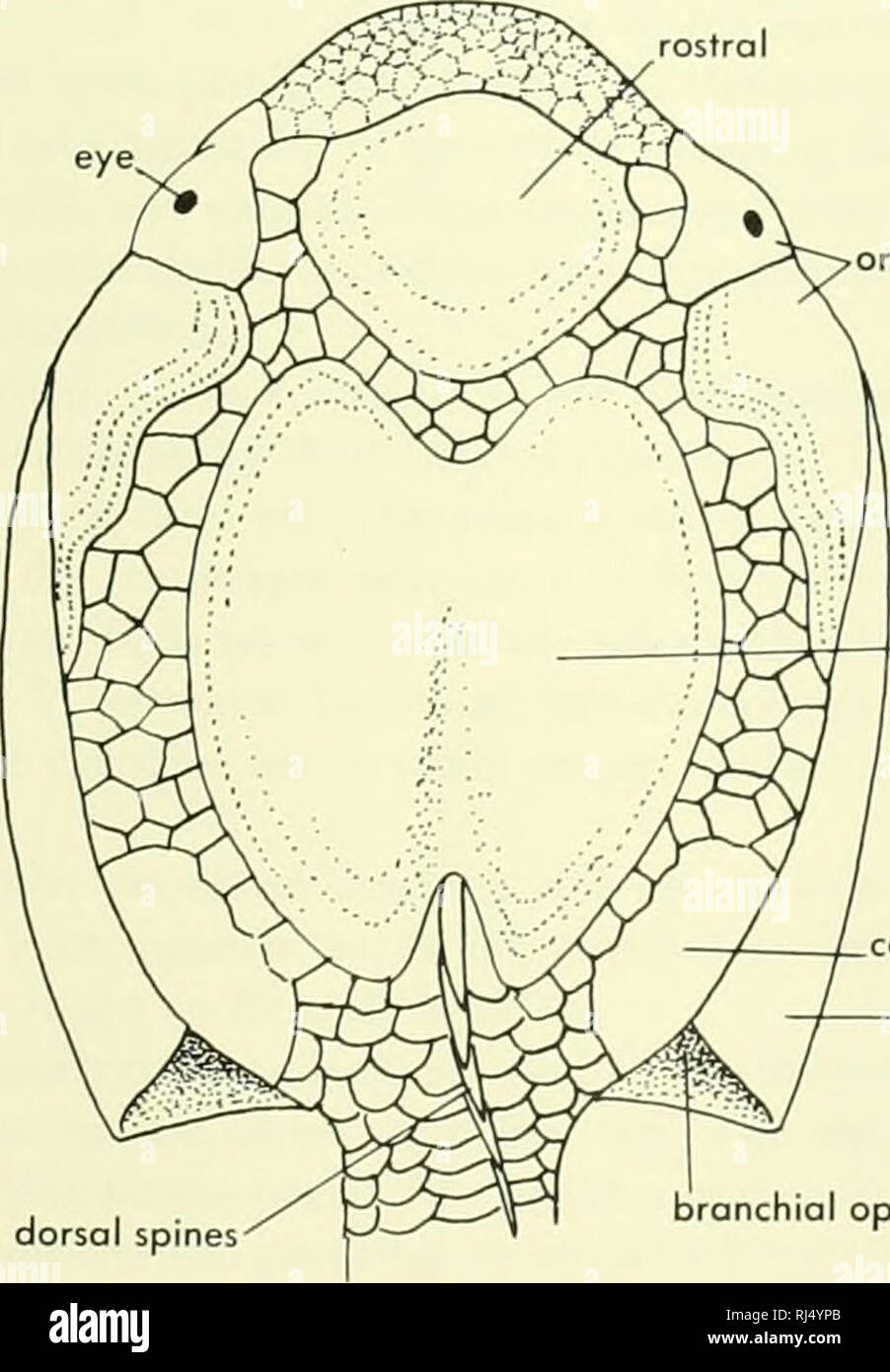. Chordate morphology. Morphology (Animals); Chordata. the present. The position of the nasohypophyseal opening on the top of the head in the osteostracan and anaspid sug- gests relationship with the lamprey. The position of this opening at the tip of the snout in the myxinid, along with the general separation of cranial and branchial skeletons suggest as close a relationship between the hagfish and lamprey as with the heterostracan. The many differences in structure of the hagfish as compared with the lamprey sug- gest that the two living lines arose at the time of the pri- mary radiation of

Image details
Contributor:
Library Book Collection / Alamy Stock PhotoImage ID:
RJ4YPBFile size:
7.1 MB (260 KB Compressed download)Releases:
Model - no | Property - noDo I need a release?Dimensions:
1317 x 1897 px | 22.3 x 32.1 cm | 8.8 x 12.6 inches | 150dpiMore information:
This image is a public domain image, which means either that copyright has expired in the image or the copyright holder has waived their copyright. Alamy charges you a fee for access to the high resolution copy of the image.
This image could have imperfections as it’s either historical or reportage.
. Chordate morphology. Morphology (Animals); Chordata. the present. The position of the nasohypophyseal opening on the top of the head in the osteostracan and anaspid sug- gests relationship with the lamprey. The position of this opening at the tip of the snout in the myxinid, along with the general separation of cranial and branchial skeletons suggest as close a relationship between the hagfish and lamprey as with the heterostracan. The many differences in structure of the hagfish as compared with the lamprey sug- gest that the two living lines arose at the time of the pri- mary radiation of the agnaths, or shortly thereafter. The relationship of agnath to gnathostome is hard to de- cide. Johann Miiller (1839), the first student of the myxinid type, decided that the "Bauplan" of the marsipobranchs (pouch-gilled fishes) was different from that of the gnatho- stome. In the pre-Darwinian period, such a decision could be made without serious difficulties, but this explanation was unacceptable to the evolutionists. Cole (1905) was able to account for the lack of jaws and the lack of similarity to the gnathostome "type" by identifying the head skeleton of the myxinid as a functional neomorph, that is, a skeleton developed in this type to meet its own needs. The theory of Gegenbaur, that the gnathostome jaws were developed from anterior gill arches, saw in the agnath a stage preceding that of the gnathostome. There is little evidence of visceral arches being involved in the mouth area of the agnath—the evidence is more apparent in the gnathostome. In spite of the difficulties, many comparisons have been drawn between the mouth parts of these two groups. If the blastematic condensations observed by Holm- gren, a recent contributor to this problem, are equated to palatoquadrate, Meckel's cartilage, and hyoid arch, then there is evidence of gnathostome jaws in this agnath group. A correlation of parts with jaws, whether following Holm- gren's views or t